Key West Cemetery – Out of the Ordinary
A visit to Key West Cemetery will dispense with the three reasons most people have in visiting a cemetery:
- They are going to a funeral.
- They are visiting someone who’s already there.
- They are the funeral.
However, there are plenty more. Cemeteries can tell you as much or more about a place than any history book, especially with the ability to use the net to find out something about almost anyone, dead or alive. Cemeteries are places of repose, often with beautiful landscaping accompanied with birdsong. Cemeteries often contain grave markers and mausoleums that are in themselves works of art and worthy of visitation. Some cemeteries contain the last resting places of famous people who you might want to pay homage to, or in some cases, to make sure they are really dead. I have written many posts on cemeteries, including one that includes the final resting place of Key West’s most famous denizen, Ernest Hemingway. Please join me as I tour one of the most interesting cemeteries in the U.S.
Key West is one of the great party towns in the entire country. Long before Jimmy Buffet came up with the Margaritaville lifestyle, Key West conchs were spending much of their time drinking, toking and generally just ‘chillin’out’. There is an underlying spirit to this place that is a lot closer to the Caribbean than the rest of the U.S., with the possible exception of New Orleans. That spirit continues after death at the Key West Cemetery where you will find as many whimsical epitaphs as religious ones, well almost. Certainly more than you’ll find in any other U.S. cemetery I have ever visited. That’s the main attraction of the cemetery, but there are also some important monuments, some good examples of funereal art and a few fairly prominent individuals buried here. It’s also a very diverse cemetery with persons of all faiths or none, whites, blacks, Cubans, Bahamians, ex-slaves, ex-slave owners, Confederate and Union soldiers, you name it. It’s not even confined to humans or the dead for that matter.
Visiting Key West Cemetery
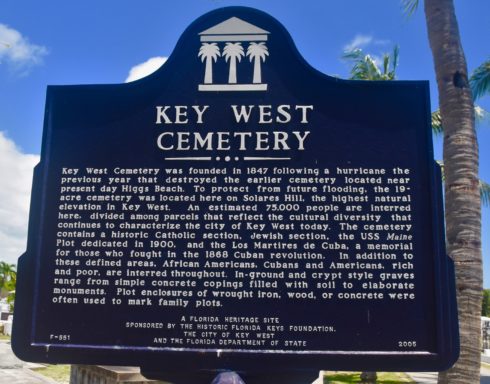
This cemetery dates from 1847, although there are graves that are older than that, having been moved to the spot after the earlier cemetery was destroyed by a hurricane. Here are two examples that date from 1829.
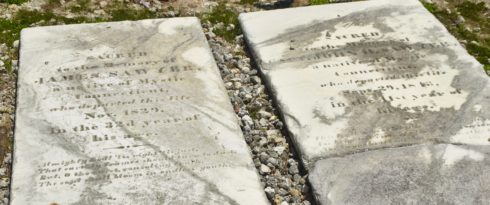
To start the tour enter through the main cemetery gates off Angela Street and pick up this map either inside the Sexton’s office or, if locked, in a box at the front door. You can also download it here. It’s free and is a very useful guide to most of the sites worth visiting in the Key West Cemetery, but don’t follow it slavishly as there are a number of interesting graves, including some of the most outlandish, that are not on the map.
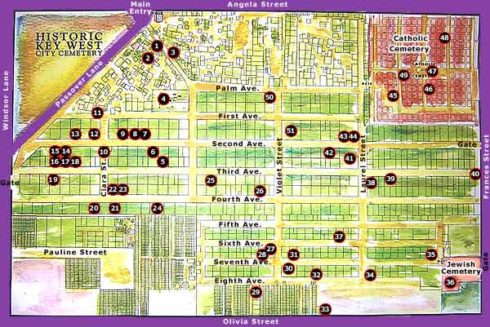
A couple of cautions before going in because you’ll probably be in the cemetery at least an hour or more. There is very little shade so bring a hat, water, sunblock and of course, your camera. One final word of caution. If you are afraid of lizards this might not be your place. It’s literally overrun with iguanas. They’re perfectly harmless, but I know some people have irrational fears about these things.
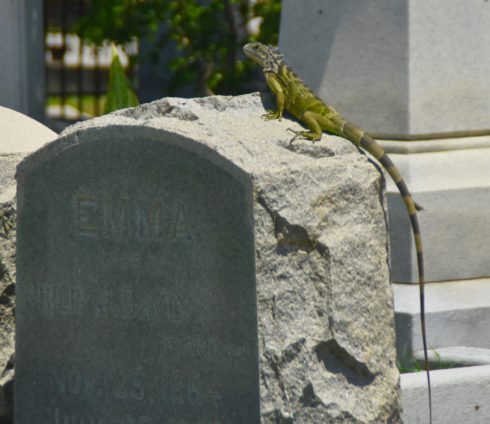
I’m not going to include a lot of the 59 places marked on the map as they would be of more interest to Key West residents than tourists, but I think what I do include should be enough to entice you to visit the next time your in this great little city.
We’ll start off with a dual grave that illustrates the diversity of the people buried here.
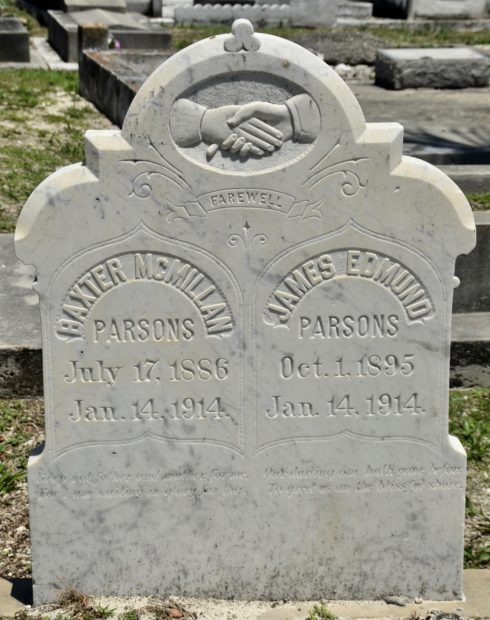
This is the grave of Baxter Parsons and his nephew James who were both killed in a construction explosion on January 14, 1914 (the map incorrectly identifies them as brothers). They emigrated to Key West from the Cayman Islands and are a good illustration of the fact that until well into the 20th century Key West had much closer connections with the Caribbean than mainland Florida.
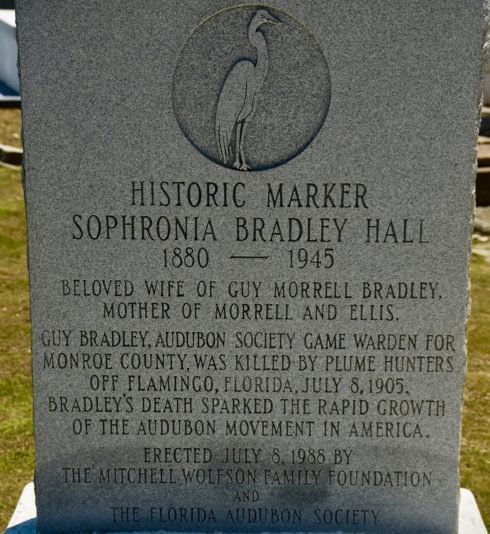
It’s not too often that you see a grave marker that is also an historic marker. The bird at the top is a great egret and this marker is really about Sophronia’s husband Guy Bradley about whom you can learn by reading the headstone or following the link which incorrectly states that he thought the poachers were after ‘everetts’, whatever the hell they are. Bradley’s grave at Cape Sable was washed away so this is the only headstone for him. Showing the spirit of the times, the cold blooded killers were acquitted as no doubt members of the jury believed that the plume hunting trade was more important to the economy than protecting the birds. They were wrong. Poor Sophonia was a widow for 40 years.
U.S.Maine Monument
Near the entrance is a fenced in area that contains the remains, known and unknown of many of the 260 sailors killed in Havana Harbor on February 15, 1898. It is without question the most important site, historically, in the Key West Cemetery.
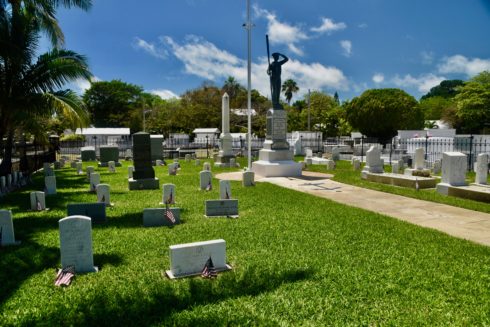
The explosion of the Maine occurred at a time when jingoism was at its height in the U.S. and served as the purported excuse for starting the Spanish-American War. The war cry ‘Remember the Maine!’ was trumpeted by the Hearst and other yellow journalism papers of the time. Although a Spanish mine was touted as the cause for the explosion, that theory is now discredited and it is believed the explosion started on board by accidental means. No doubt, if it happened today the Alex Jones’ of the world would label it as a ‘false flag’ operation deliberately perpetrated by the U.S. to start the war. No matter what the cause, it was a major event in American history and standing before the statue of the oarsman looking for his fallen comrades you get a palpable sense of history.
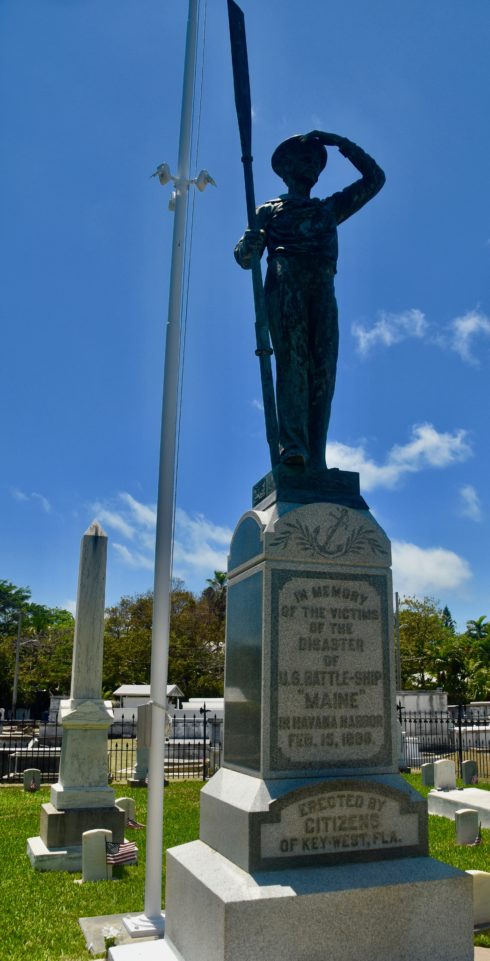
As noted on the map the fenced in area contains other graves as well including confederate veterans, two British airmen, a Brazilian sailor and five African-American Union sailors.
Here is an example of a Civil War vet, although it’s just outside the monument.
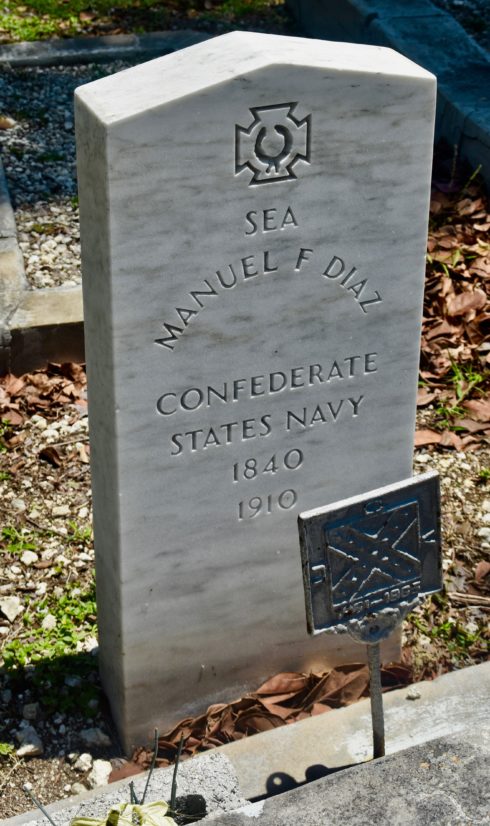
Diaz is not exactly your typical name for a member of the Confederate Navy. Despite the ongoing controversy over flying the Stars and Bars flag of the confederacy, I don’t think placing it before the grave of someone who fought under that flag is objectionable.
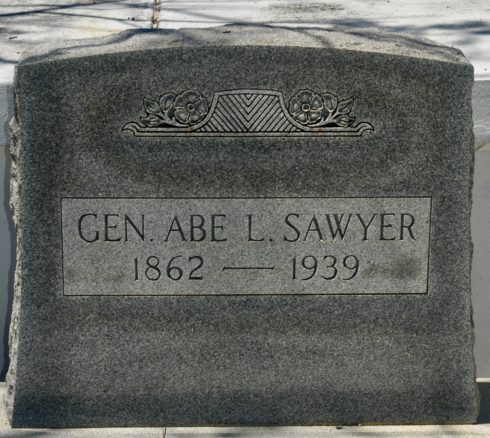
This is General Abe Sawyer who was neither a general or as long as the slab of concrete in front of this headstone would suggest. He was a 40 inch tall dwarf or midget as he was called in his time and requested that he be buried in a full sized coffin, which his relatives complied with. There are Sawyers everywhere in this cemetery, including even a Tom.
Now for something completely different.
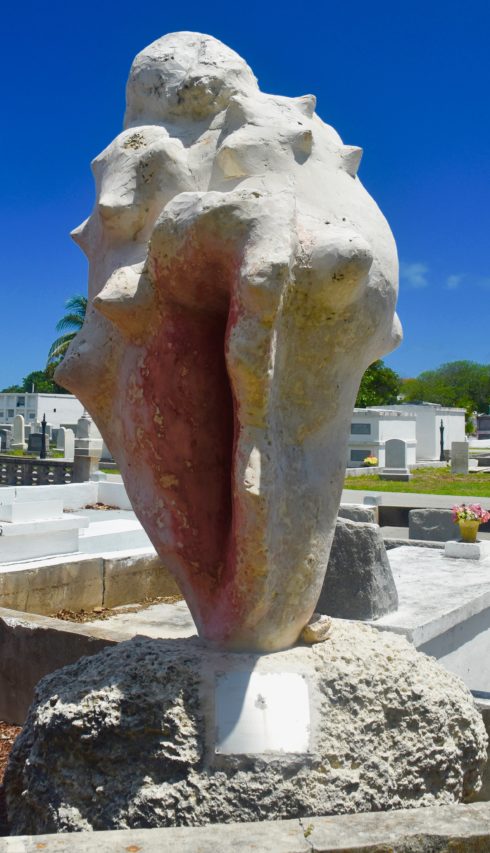
This grave marker in the shape of a Florida conch marks the final resting place of Sir Peter Anderson , for 25 years the Secretary-General of the farcical (in both meanings of the word) Conch Republic. He was one of the great Key West characters and an inspiration for many of the loafers that make the Duval Street scene so much fun. Quite fittingly his grave marker has these three words, “He had fun.” And how. This is one of the graves not on the map’s list. I wonder why?
Masonry is or was a huge thing in Key West. There are masonic symbols on hundreds of the headstones. Most people think of the Masons as a white, protestant based organization. Not in Key West where there were hispanic lodges, black lodges and even Catholic lodges. This is the Dr. Felix Varela Masonic Lodge crypt.
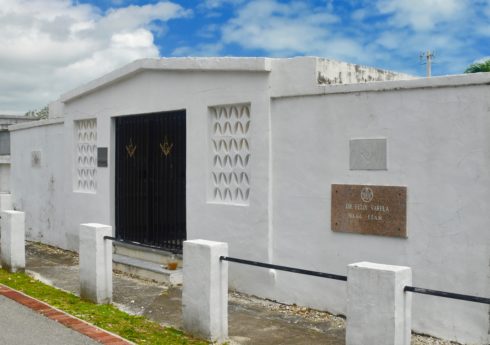
Felix Varela was a cuban Catholic priest with a Doctorate of Theology. He is best known as an emphatic fighter for Cuban independence and the rights of the poor. He is currently on the road to canonization. So forget any ideas about the Masons being strictly an egalitarian white, protestant group. BTW, Varela is not interred in this crypt, but in Havana.
Not far from the Masonic crypt is the grave of another of Key West’s famous good time Charleys or in this case, good time Joe.
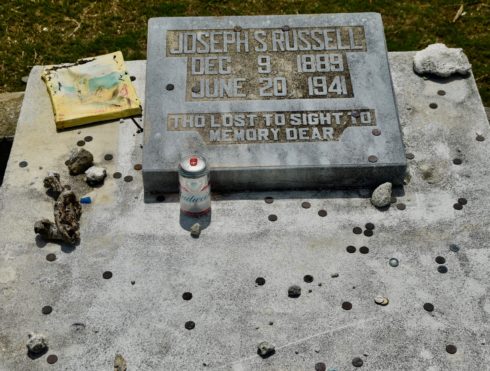
This is Sloppy Joe Russell , fishing guide, rum runner, barkeep and boon companion of Ernest Hemingway until he died of a heart attack at age 53. Strangely the photo of the grave marker on the links is different than the one I’ve shown. As you can see from the coins, can of Budweiser and package of cigars, wherever he is, people are still helping Sloppy Joe have a good time. Party on Joe!
Things were not all peace, love and understanding in Key West, especially up until WWII. There was a KKK chapter in Key West and this is the grave of one of its victims.
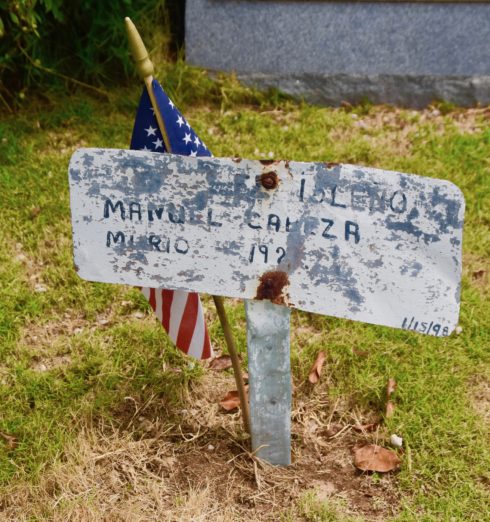
Manuel Cabeza was a WWI vet who moved to Key West after the war.
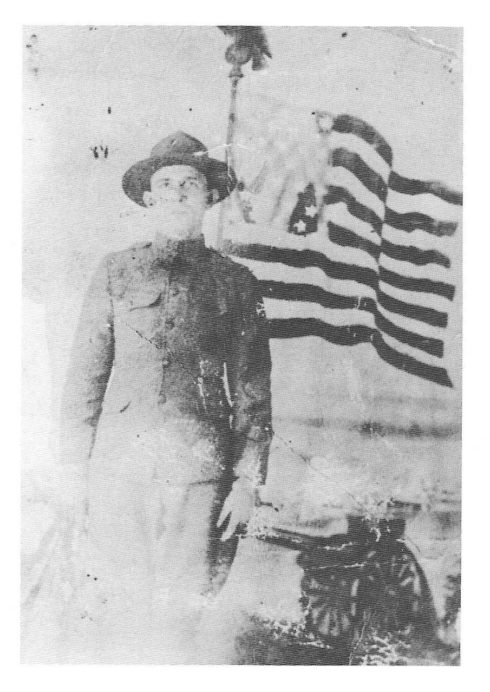
He took up with a mulatto woman which upset the Klansmen who resorted to that age old symbol of American hatred by tarring and feathering him. Manuel was not afraid of the Klan and on Christmas Eve, 1921 shot dead one of his perpetrators, a prominent cigar factory manager, on Duval Street after which he was arrested and put in jail. The next day a mob of Klansmen dragged him out and lynched him. For good measure they then shot him. So much for serving your country. The only good thing one can say about it is that this was only documented lynching ever in the Keys. Also, after Cabeza was put in jail the sheriff called in Marines from the nearby base to protect the jail. However, thinking things had calmed down he let them go. That decision was fatal for Cabeza. Naturally no one was ever charged even though it happened in public and including a beating, being towed by a car down the street followed by the lynching and shooting.
Here’s someone who beat the odds considerably.
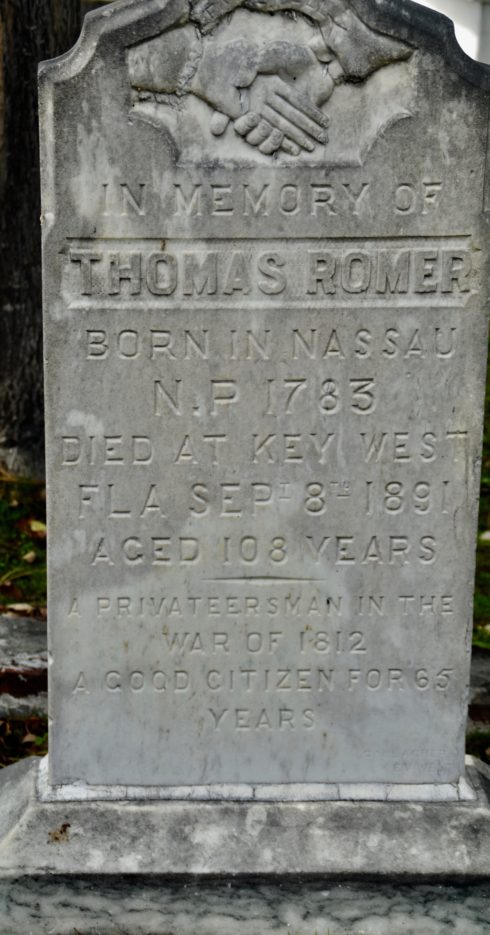
Thomas Romer was a black Bahamian who engaged in many pursuits including privateering during the War of 1812. As his headstone attests he died at 108 having lived a good life for 65 years, which begs the question, “What about the other 43 years?”.
Key West Cemetery has a number of distinctive architectural styles among its many crypts including this Gothic Revival crypt for the prominent Papy family.
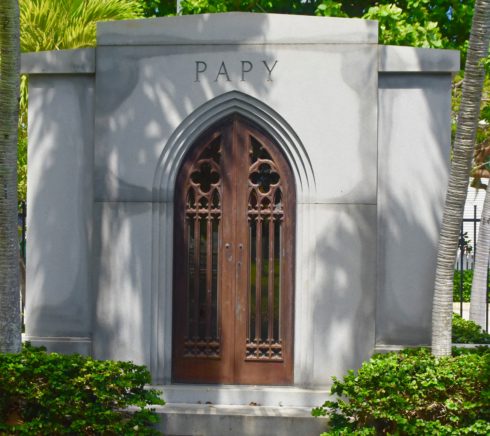
The Taylors preferred to go with this Egyptian style crypt, the entrance to which mimics the entrance to every temple in Egypt.
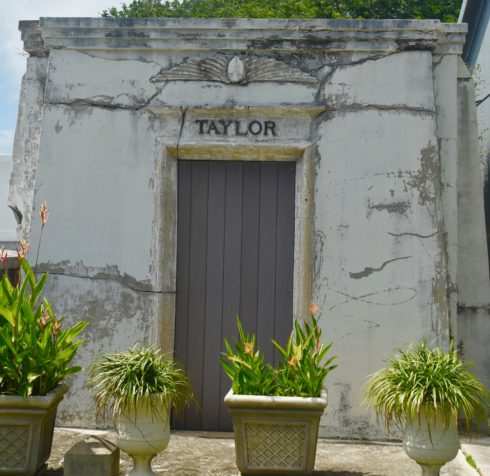
In terms of funereal art, there are some pretty good specimens, including this beautiful angel looking over the grave of Gladys Bates.
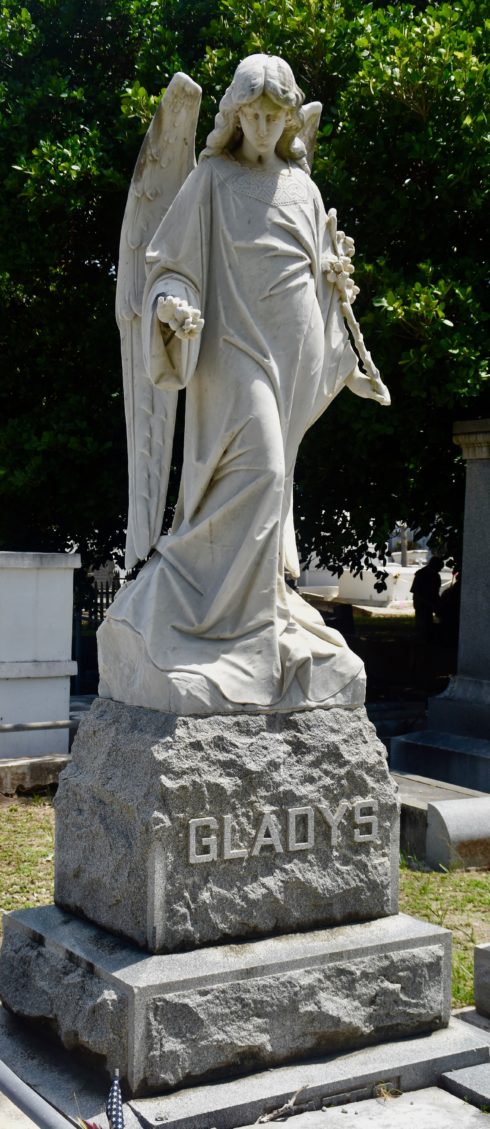
The works of art are not confined to the older graves as this one to Jane Louise Newhagen attests. She is a writer of historical novels set in Key West, the titles of which are found under the bench. You’ll see there are a couple of blank titles because Jane is still with us and no doubt hopes to add to titles in the future. Forward thinking Jane.
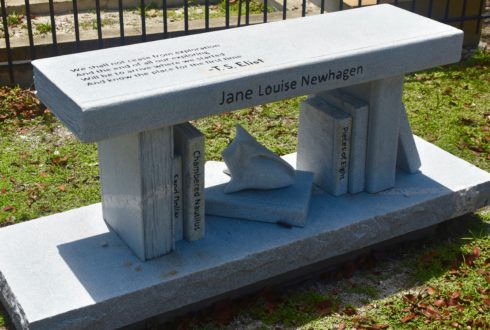
Here’s another new one that falls into the whimsical category.
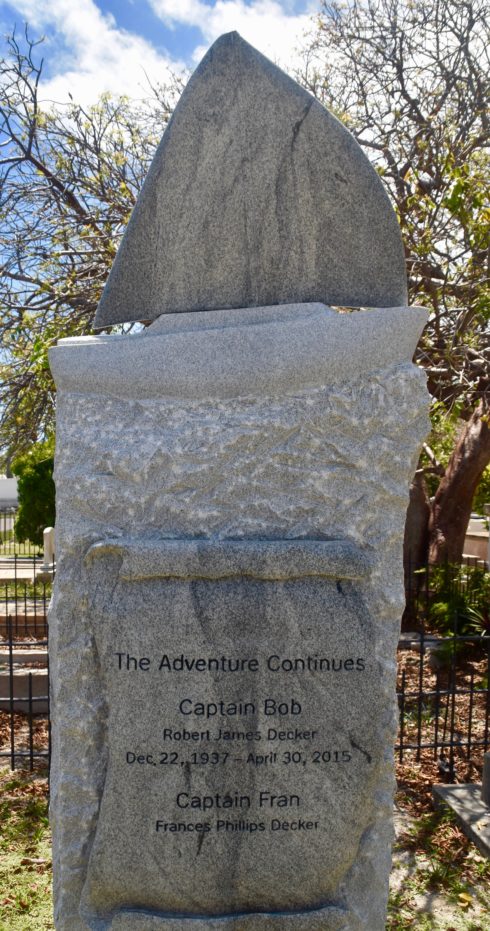
Captain Bob Decker lived a full life and after it was over he was simply embarking on another adventure. That’s the way I feel about life.
Some of the monuments are positively outré, particularly this grave of Archibald Yates which features a naked bound woman in either agony or ecstasy – you can’t really tell. Even though he only died in 1966, no one knows what this statue is meant to represent. Yates literally took the secret to his grave.
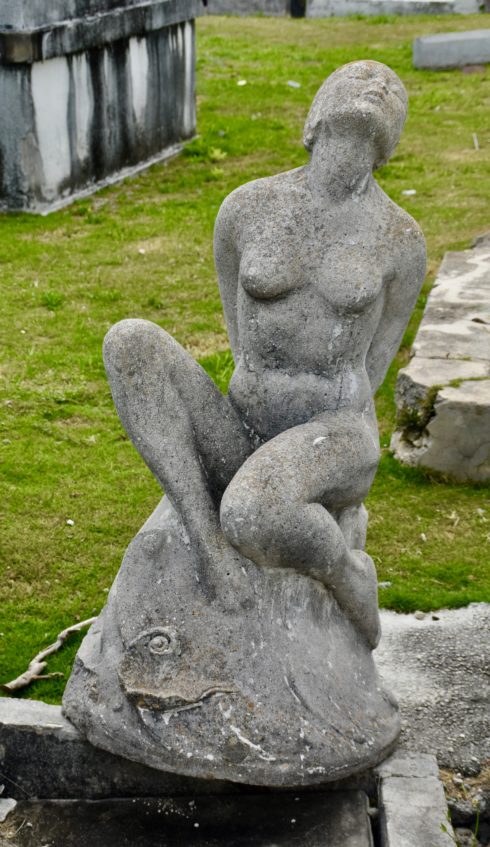
There is a separate section of the Key West Cemetery set aside for Jewish burials.
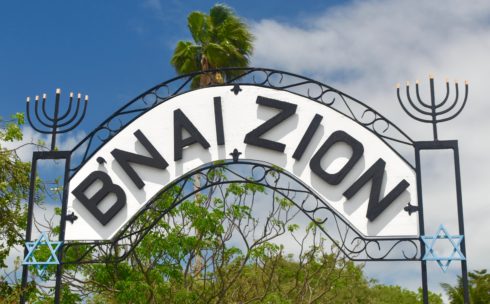
It appears newer and is is much better kept than most of the other graves. The many pebbles on the grave markers represent a practice that goes back millennia, but there seems to be no definitive agreement on what the custom stands for. I know in our family we put a pebble on the grave of our grandparents whenever we visit and to me it is simply a sign that says,”I was here and I haven’t forgotten you.” In that case most of these people are well remembered.
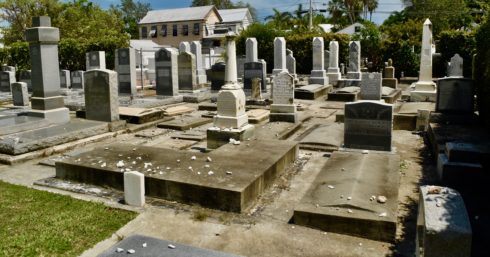
Right beside the Jewish Cemetery is probably the most famous of the graves in Key West, or at least the one a lot of people come to see. It’s not because the person who rests here did anything notable in her lifetime, but rather for what she had inscribed as, in effect, her last words. Read them and laugh.
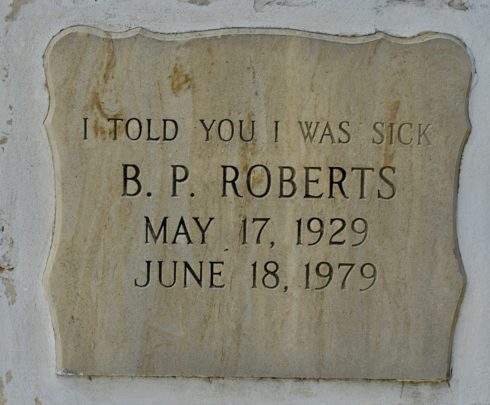
Some grave markers are noteworthy not for what they say or the funereal art associated with them, but rather of what they are made of. This is a rare example of white bronze, an alloy made primarily of zinc and known for their durability. As you can see this one has stood up well for over 120 years.
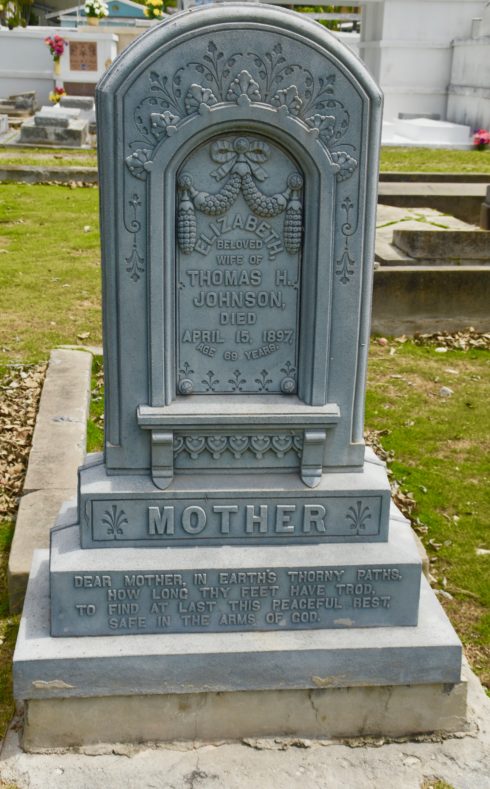
Ok, only a few more to go. This is Roosevelt Sands, a Bahamian who became a major figure in both civil rights and baseball. Note that he was also a Mason.
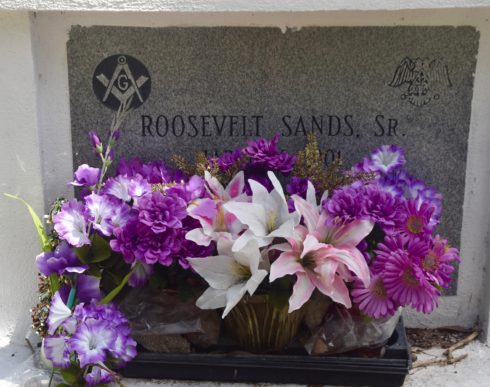
He was certainly a dapper looking gent which fits in quite well with his reputation which has led to the naming of several public buildings in Monroe County after him..
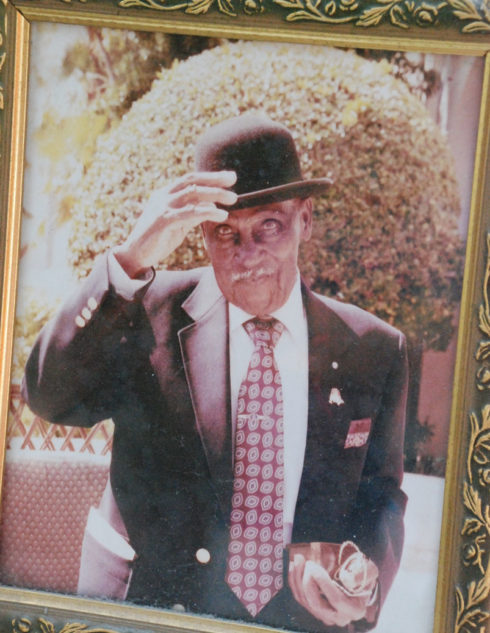
Remember I said that the burials here are not confined to humans. This Thor the dog.
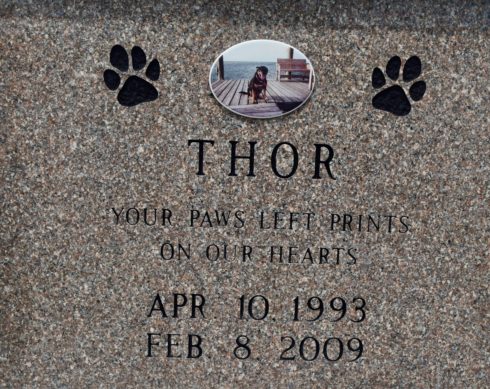
And my favourite in the entire cemetery, Elfina the deer. You’ll find her in the large fenced in Otto family burial ground. Note that Elfina died in Coral Gables and they took her all the way to Key West to bury her. She must have been one loved pet.
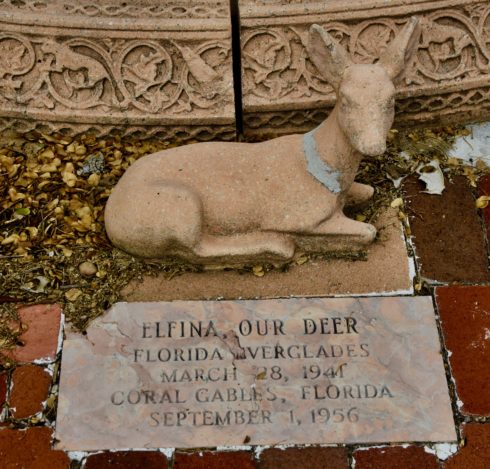
I know of no other cemetery in the U.S. that permits animals, non-human ones that is, to be buried with their owners.
There was one grave that brought tears to my eyes as I think it would to anyone’s.
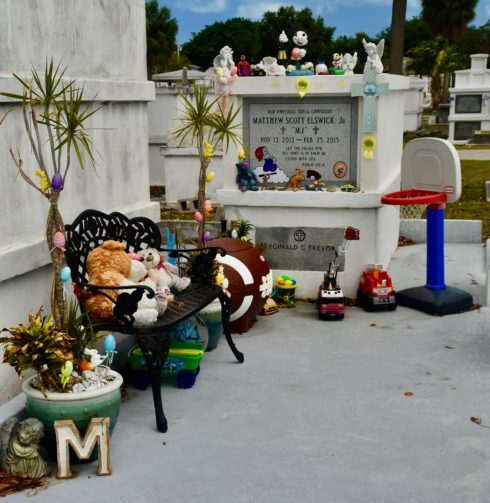
This two year old Matthew Scott Elswick Jr. or MJ as he was called. His obituary does not say what he died from, but it appears to have been some kind of life long condition. This happened to my youngest brother John and it devastated our family for far longer than little John lived. I can only hope the Elswick’s can recover.
I’m definitely not going to end this post on a downer so we’ll pay a visit to Norm Taylor, aka Captain Outrageous, another one of Key West’s most notorious characters.
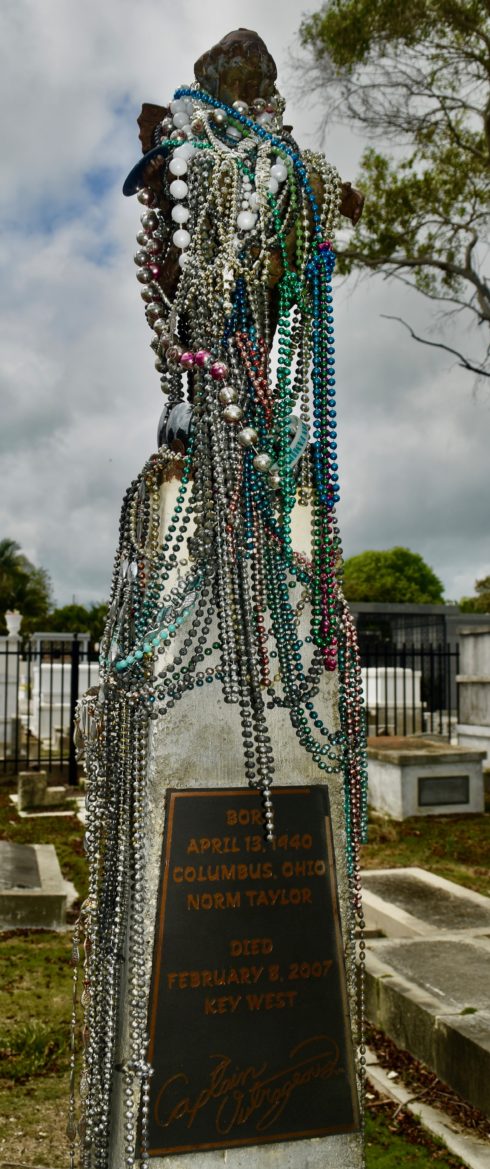
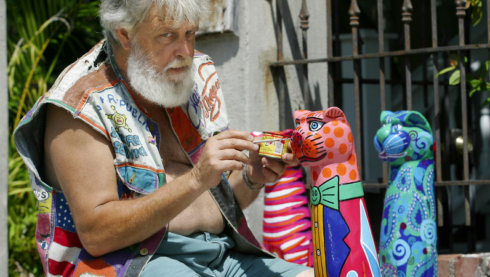
You can see from the many beads left behind that Captain Outrageous is sorely missed. BTW, that’s an angel underneath all those tributes.
So that’s my visit to Key West Cemetery. I have barely scratched the surface in terms of interesting graves. Why not visit and make your own list? If you happen to be in the Sanibel-Captiva area in SW Florida check out the tiny cemetery on Captiva for another interesting look back into Florida history.
Another place with interesting cemeteries is New Orleans. Here’s what I found on a post Katrina visit many years ago.

